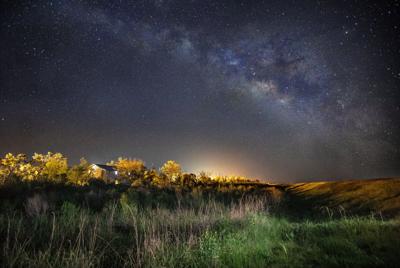Isle de Jean Charles in Terrebonne Parish used to be the kind of rural retreat that reduces hard-bitten newspaper reporters to filing stories about time passing this idyllic spot by.
Throw in a brief account of some traditional ethnic skill — say, pirogue building — and you've introduced readers to an alien and fascinating world.
When the Houma Courier ran such a story about Isle de Jean Charles, the residents were not at all appreciative, however. It was many years ago, but those of us who worked on the paper at the time have not forgotten the fury of the delegation that descended on our office.
The story neglected to mention their washing machines, television sets and all the other modern conveniences that made life on the island typical of contemporary America, the islanders complained. The merest hint that they inhabited some primitive backwater was evidently enough to produce hurt feelings and resentment.
It makes eminent sense, given their history, that they feared rejection by mainstream America. That was what drove them to Terrebonne Parish in the first place and, since then, the land they occupied almost 200 years ago has shrunk disastrously. And so have their numbers.
The story of their displacement is a familiar one, with armies of White interlopers driving the natives off the best land and exterminating the resistance. It began with President Andrew Jackson's Indian Removal Act of 1830, under which starving Mississippi Choctaws were banished and forced to traipse west along what became known as the Trail of Tears. At least 10,000 of them died en route.
Some of the Choctaw refugees hooked up with Biloxi, Houma and Chitimacha tribes in the Terrebonne Parish swamps, where they spoke a dialect of Cajun French, later banned by Anglophone school authorities. Kids caught conversing in their native language were subject to corporal punishment.
Meanwhile, the island was shrinking fast. Old inhabitants still remember hunting duck or muskrat when its marshes and prairies covered 35 square miles. Now it is down to one square mile, and the population, 325 a generation ago, has been reduced to a stubborn handful. The island has largely given up the ghost.
That Isle de Jean Charles was doomed to sink beneath the waves has long been obvious, for, thanks to a combination of rising sea levels and subsiding soil, Louisiana is where the effects of coastal erosion are impossible to ignore. You don't need to be all that old to glance at a large expanse of open water and picture the terra firma that used to be there.
The experts have given us a clear idea of the self-denying ordinances that are necessary if we are to reduce the impact of mankind on climate and coastal erosion, but we have paid limited attention so far. Chances are the seas will continue to rise, with devastating consequences worldwide.
Some 150 million people are living on land that will lie below the high-tide line by midcentury, and a slew of coastal communities will be wiped off the map, according to research conducted by scientists at Climate Central.
Parts of Louisiana, in particular its barrier islands, seem destined for oblivion. Every time a storm menaces the Gulf Coast, we are left to wonder how much of Grand Isle will be left tomorrow.
Email James Gill at gill504nola@gmail.com.

